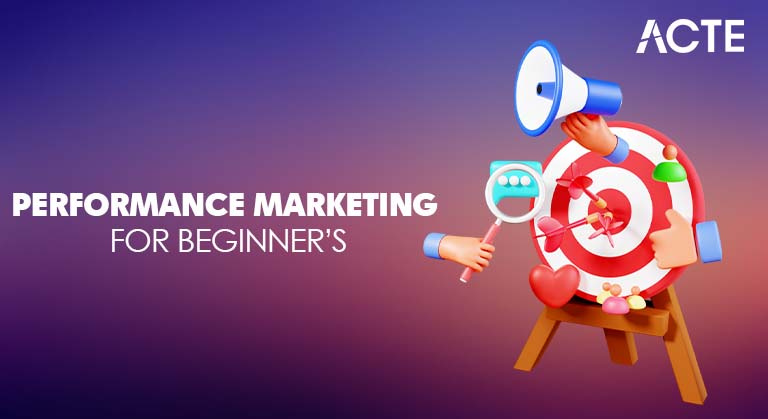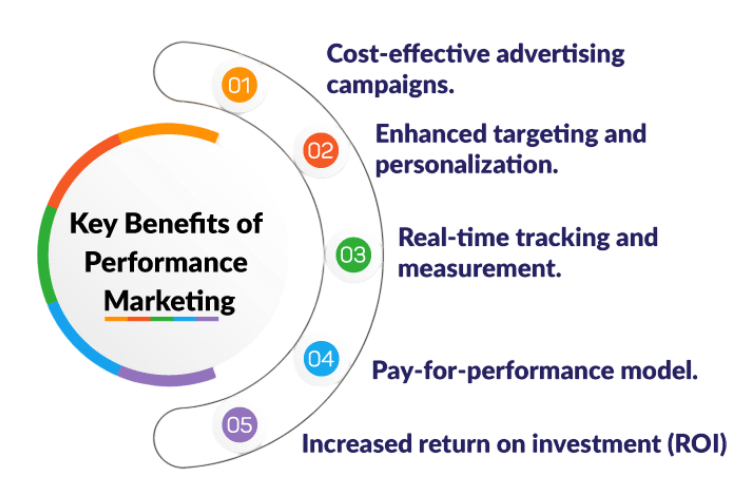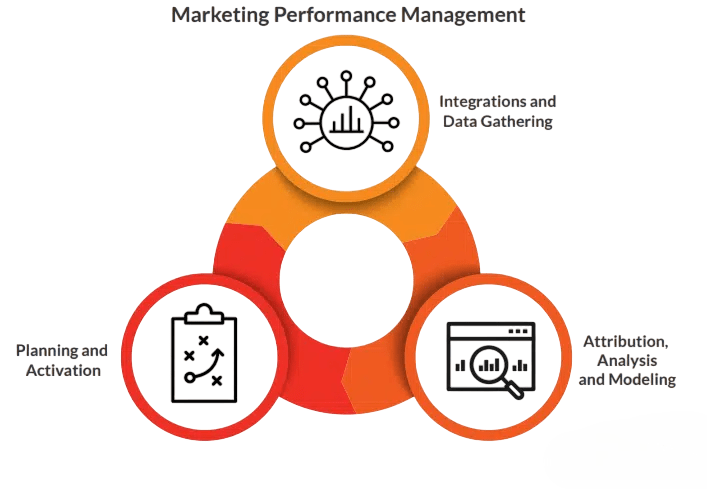
- Introduction
- Defining Performance Marketing
- Core Channels and Tactics
- Key Metrics and KPIs
- Benefits of Performance Marketing
- Challenges and Risks
- Building a Performance Marketing Strategy
- Real-World Examples
- Best Practices and Advanced Tips
- Future Trends
- Conclusion
Introduction
In today’s digital age, businesses demand more than just broad visibility from their marketing efforts, they require measurable results and clear returns on investment. Performance marketing fulfills this need by focusing exclusively on measurable actions such as clicks, leads, and sales a results-driven approach taught in Digital Marketing Training, where learners master campaign tracking, ROI optimization, and data-led decision-making to drive performance across paid media channels. Unlike traditional marketing, where costs are often fixed upfront regardless of outcomes, performance marketing allows advertisers to pay only when a specific action is completed. This detailed guide explores the concept of performance marketing, outlining its strategies, channels, key metrics, advantages, and challenges. It also provides a step-by-step framework for building effective campaigns, supported by real-world examples and best practices.
Ready to Get Certified in Digital Marketing? Explore the Program Now Digital Marketing Online Training Offered By ACTE Right Now!
Defining Performance Marketing
Performance marketing is a form of digital marketing where advertisers pay only when a specific, measurable action occurs an ROI-driven model embraced by Big Brands Transforming Experience, where companies like upGrad, Neeman’s, and Vero Moda optimize campaigns across Meta platforms and marketplaces to achieve high returns on ad spend, leveraging full-funnel strategies and AI-powered targeting to drive growth and engagement. These actions, known as conversions, vary depending on campaign goals and may include:
- Clicking on an ad
- Submitting a lead form
- Downloading a resource
- Making a purchase
- Installing an app
- Signing up for a newsletter
This pay-for-performance model reduces wasted ad spend and enables precise tracking of marketing ROI. Key participants in the performance marketing ecosystem include advertisers, publishers, affiliates, ad networks, and analytics platforms that measure and attribute results.
Core Channels and Tactics
Performance marketing utilizes several digital channels, each with unique advantages an approach central to What Is Pay-Per-Click, where advertisers leverage platforms like Google Ads, Bing Ads, and social media networks to drive targeted traffic and measurable ROI. PPC enables precise audience targeting, budget control, and real-time performance tracking, making it a cornerstone of digital campaigns that prioritize conversions, visibility, and cost-efficiency.
- Pay-Per-Click (PPC) Advertising: Platforms such as Google Ads and Microsoft Advertising allow advertisers to bid on keywords. Payment occurs when users click on the ads, and campaigns are optimized for conversions.
- Affiliate Marketing: Third-party affiliates promote products on their websites or social platforms, earning commissions on each sale or lead generated through their referral links.
- Social Media Advertising: Social networks like Facebook, Instagram, LinkedIn, TikTok, and Pinterest provide advanced targeting and optimization options with pay-per-click or pay-per-action models.
- Influencer Marketing: Brands collaborate with content creators whose audiences align with the brand. Performance is tracked through affiliate links, promo codes, or unique URLs.
- Email Marketing: Segmented email campaigns track click-through and conversion rates, focusing on nurturing leads and driving repeat purchases.
- Programmatic Display Advertising: Automated bidding and buying of display ad inventory across multiple websites, using real-time data to optimize placements and targeting.
- Cost Per Acquisition (CPA): Cost incurred to acquire a customer.
- Cost Per Lead (CPL): Cost to generate a qualified lead.
- Cost Per Sale (CPS): Cost associated with each sale.
- Cost Per Install (CPI): Cost to generate an app installation.
- Return on Ad Spend (ROAS): Revenue generated for every dollar spent on ads.
- Customer Lifetime Value (LTV): Projected revenue from a customer over their engagement with the brand.
- Click-Through Rate (CTR): Percentage of impressions that resulted in clicks.
- Conversion Rate (CR): Percentage of clicks that resulted in conversions.
- Set Clear Goals and Segment Audiences: Define measurable objectives such as target cost per lead, sales volume, or app installs. Segment audiences by demographics, behaviors, and interests to tailor campaigns.
- Choose the Right Channels: Select channels based on audience presence and campaign goals. For example, search ads are effective for intent-driven prospects, while social ads work well for brand engagement and retargeting.
- Develop Creative and Optimize Landing Pages: Create compelling ad creatives aligned with the audience’s pain points and interests. Ensure landing pages have clear calls to action, fast load times, and mobile responsiveness.
- Implement Tracking and Attribution: Use UTM parameters and platform pixels to track user journeys accurately. Set up conversion tracking and choose appropriate attribution models (last click, first click, or data-driven).
- Execute Campaigns and Optimize: Start with test budgets and keep a careful eye on important metrics. To maximize return on investment, re-allocate funds, improve creatives, and modify targeting by analyzing performance. On the basis of performance marketing strategy data, keep iterating.
- Example 1: SaaS Lead Generation: A productivity software company targeted business executives via LinkedIn Ads and Google Search campaigns. By A/B testing landing pages and refining ad copy, the company reduced cost per lead from ₹800 to ₹450 within two months.
- Example 2: E-commerce Growth: A premium coffee subscription brand utilized Facebook carousel ads combined with affiliate marketing. Their targeted offers and social proof increased ROAS to 5× in the first month, doubling their recurring customer base over three months.
- Segment Conversions by Value: Allocate more budget to high-value leads or customers.
- Use Data-Driven Attribution Models: Employ advanced models that credit multiple touchpoints appropriately.
- Leverage Retargeting Campaigns: Create personalized messaging sequences to re-engage users.
- Utilize Dynamic Creative Optimization: Test different creative combinations automatically.
- Integrate CRM Data: Connect offline sales and customer data to refine online campaigns.
- Conduct Controlled Experiments: Use hold-out groups and A/B tests to measure true lift.
- Refresh Creatives Regularly: Prevent audience fatigue by updating ads every 2–3 weeks.
- Employ Fraud Prevention: Use technology to filter invalid traffic and maintain data integrity.
- Automate Budget Reallocation: Use rules or scripts to shift spend to high-performing campaigns.
To Explore Digital Marketing in Depth, Check Out Our Comprehensive Digital Marketing Online Training To Gain Insights From Our Experts!
Key Metrics and KPIs
Measuring success in performance marketing relies on tracking the right metrics: conversion rates, cost per acquisition, return on ad spend, and customer lifetime value benchmarks that align with Local SEO Tips To Rule Google Maps, where marketers learn to monitor map pack visibility, click-through rates, and engagement signals to evaluate local campaign effectiveness and optimize for high-intent, geo-targeted traffic.
A deep understanding of these KPIs allows marketers to allocate budget efficiently and refine campaigns.
Benefits of Performance Marketing
Performance marketing offers a powerful way for businesses to get the most out of their advertising spending. It focuses on accountability and transparency, ensuring that advertisers pay only for real results. This model helps cut down on wasted money and reduces financial risks.

The ability to scale means that successful campaigns can grow quickly. At the same time, real-time data analysis allows for ongoing improvements and better targeting. Performance marketing closely connects with business goals by focusing on specific conversions that increase revenue. Its flexibility allows for quick changes to campaigns based on shifting market trends and consumer behavior. This makes it a vital strategy for companies that want measurable and efficient marketing. This approach not only lowers initial financial risks but also offers valuable insights that support smarter, data-driven choices in marketing efforts.
Looking to Digital Marketing Training? Discover the Digital Marketing Expert Masters Program Training Course Available at ACTE Now!
Challenges and Risks
Performance marketing is powerful but comes with its own set of challenges. Attribution complexity is a major issue. Customers often interact with several touchpoints before making a purchase, making it hard to assign credit accurately. Adding to this problem are risks like fraudulent traffic, which can falsely inflate performance numbers through bot activity and invalid clicks. The competitive digital landscape makes these challenges even tougher threats addressed in Digital Marketing Training, where learners explore ad fraud prevention, traffic validation techniques, and campaign integrity strategies to safeguard performance metrics and optimize ROI. Costs per click and acquisition rise, while marketing channels become saturated, which can blur the focus of marketing strategies. Marketers also have to navigate complicated data privacy laws like GDPR and CCPA. They must ensure compliance while still targeting effectively. Creative fatigue is another issue to consider. When audiences see the same message too often, it can reduce the effectiveness of campaigns and engagement. Lastly, focusing too much on immediate performance metrics can unintentionally hurt long-term brand building and customer loyalty. To address these various risks, it’s important to set up strong tracking systems, implement proactive fraud prevention, and maintain a balanced approach to performance marketing that considers both short-term results and long-term goals.
Building a Performance Marketing Strategy
To build an effective performance marketing strategy, follow these steps: define clear conversion goals, select the right channels (e.g., PPC, affiliate, social), set up tracking infrastructure, optimize creatives and landing pages, monitor key metrics like ROAS and CPA, and iterate based on data insights each step covered in Digital Marketing Certification Process, where learners master campaign architecture, analytics interpretation, and ROI-driven decision-making to execute high-impact, measurable marketing initiatives.

Preparing for Digital Marketing Job Interviews? Have a Look at Our Blog on Digital Marketing Interview Questions and Answers To Ace Your Interview!
Real-World Examples
Best Practices and Advanced Tips
Future Trends
Performance marketing is changing quickly due to new technologies and shifting privacy rules. Artificial intelligence is transforming campaign strategies by improving bidding and targeting, which allows for greater efficiency and accuracy. As privacy regulations become stricter, marketers are focusing on first-party data and contextual advertising. This shift ensures that their approaches are more transparent and driven by consent an ethical pivot explored in Become a Digital Marketing Specialist, where professionals learn to navigate the cookieless future using privacy-first frameworks, consent management platforms, and contextual targeting to build trust, personalize experiences, and stay compliant with evolving global standards. The advertising landscape is also broadening beyond traditional channels, with performance-based buying now reaching connected TV, audio streaming platforms, and in-app environments. New trends like shoppable content and smooth omnichannel personalization are changing how customers engage. They let brands create more seamless and direct purchase experiences across both digital and offline platforms. These changes highlight the urgent need for marketers to evolve. They must use new technologies and customer-focused strategies to stay competitive in a more complex digital world.
Conclusion
Performance marketing represents the future of accountable and efficient digital advertising. By focusing on measurable outcomes and leveraging data across multiple channels, businesses can maximize ROI and drive sustainable growth. Success requires clear goal-setting, disciplined channel management, precise tracking, and continuous creative optimization core competencies developed through Digital Marketing Training, where learners master multi-channel strategy, KPI alignment, and iterative campaign refinement to achieve scalable marketing success. When combined with traditional brand marketing, performance marketing forms a balanced strategy that drives both short-term results and long-term brand equity. If you are ready to take your marketing to the next level, adopting a performance-driven approach is essential in today’s digital-first marketplace.




